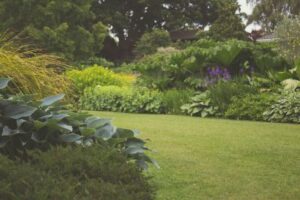A Guide to a Garden That Extends Your Home
When your home has an outside space attached to it, it can help to add to the impression that your home has extra space – able to provide you with time spent outside when the weather allows for it. It’s a real selling point, and something that might have you feeling much more comfortable about where you live.
However, the sheer number of opportunities and possibilities for what to do with this space can inevitably overwhelm you. In particular, if you’re hoping to understand how to design this space in a way that feels like a functional extension of your home, you need to understand your own ambitions in-depth.
Laying the Foundations
There are several different points along the line of progress that you might be at with your garden. It might be that it only requires a few minor adjustments in order to become usable in the same way as the other parts of your home. However, it could also be that it requires a dramatic overhaul – perhaps being left in a bit of a mess since you moved in. When it’s the latter, the motivation to do anything with your garden can plummet due to all of the effort required to get anywhere – something that, in turn, means that you need enough time to concentrate on it.
A dedicated afternoon might allow you to clear most of the worst of it, though. It might take a lot of effort at the time, but if the end result is that you can start to enjoy the time that you spend in your garden, it’s a small price to pay. Furthermore, while this is only the beginning of the process, you might find that the next stages are more enjoyable. Once you have the space to work with, you can begin to get creative, and that’s altogether a stage that is much more open to fun.

The Intention
However, once your garden is at a point where you can start to think of it as a blank canvas, then it might be time to decide what you want to do with it. Depending on the size of the space, this doesn’t have to be any one thing, but it can help to have a core idea of what you want to do with your garden.
For example, you might find yourself interested in making this a social space – somewhere that beckons you and your friends or family on warmer days. If that’s the case, then you might be interested in decking. As soon as you start to think about installations like this at home, you’re met with a wall of different options and directions to go in. Different materials, different colors, how you want to arrange the space – the initial decision is just the beginning. Still, you want to ensure that you’re getting the best deck installation possible, meaning that looking over different possible professionals to see who would be able to offer you what’s closest to your ideal might be good research to undertake.

The Surrounding Space
Even then, however, the decking is unlikely to take up your whole garden, and you might want some green space to amplify that feeling of you spending time outside. This green space might feel obligatory to some people – with a simple lawn being all that they’re looking for. Others will want to take it in a more varied direction, though, and to some, that might be more important than making the garden feel connected to the house at all.
This is where gardening comes into play. If this is something that you’re already interested in, you likely started to plan what you’re going to do with your garden as soon as you saw that you have one. However, if you don’t fall into this camp, it might just be something that you see as a chore. An open mind can prevent that from being the case, though, and gardening could present you with an opportunity to become engaged with a new hobby – one that has been reported to have a host of mental health benefits. Having a way to work on your home and counter your stress at the same time might be exactly what you need to feel proactive when that’s what you’re looking for.
What kind of variety might this include, though? Well, beyond the different types of flowers that you can plant, you might also think about trees and ornaments that can allow for climbers, in order to give your garden an element of verticality. In addition to this, it might not just be the flora that you’re interested in but the fauna as well. In that case, you might choose what you plant based on what’s likely to bring in different birds and animals for a natural wildlife experience.

Seeing it From the Inside
It’s also worth considering how you access your garden in the first place. If it’s relatively cut off from your home in that you can only get to it through one door, and there are no windows looking out over it, it’s natural that it might not feel like an extension of your home. On the other hand, if it has a few entrances, and can feel like something you can look onto easily, you might get more out of it. Another benefit of this is that you can enjoy your garden even in the colder months when you might not feel as inclined to sit out there.
If you have taken the route of planting various flora to entice wildlife, this can mean that rooms in your home become nature-watching spots. In fact, you might find that you’re able to find new ways to relax by simply quietly birdwatching when you have some spare time, or maybe just read and listen to the various sounds that are coming from your garden.
It’s Private
Some gardens are communal and there’s not much that you can do about that. These can often be pleasant social spaces, with the gardening that does take place here becoming good opportunities for collaboration.
However, if the garden is a private one, you might find that the comfort you feel in that space is more dependent on how private it actually feels. Fences can only go so high, but some partition that lets you feel as though you can be in your own company when sat outside can go a long way.
The idea of trees mentioned previously can be beneficial here, allowing a cover and a feeling of density to your garden that doesn’t break the immersion of the natural space. The difficulty comes from when these taller installations might infringe on the gardens of those living around you, but the proper planning can help you to work around that.
Again, though, it’s all down to personal preference. Some people might prefer to embrace the community spirit that comes with adjoining gardens – happy to talk to their neighbors when you find yourself outside at the same time as them. If not, there are many different routes you could take towards helping your garden feel like more of your own, and a place where you can find solace.
